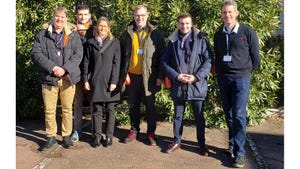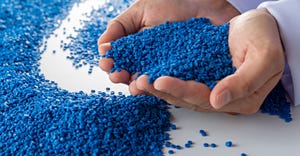Plant Site Strategies: Success in spite of the negatives
September 15, 1998
Plant Site |
STRATEGIES |
Starting a molding business these days requires that you have--or are able to raise--capital. If you know how to do that and can add in a mix of entrepreneurial spirit, business savvy, and a willingness to improve any negatives you're handed, then growth is in your future. Rapid growth, in the case of Maca Plastics Inc., West Union, OH. Founded just three years ago, Maca recently expanded into a $1.9 million facility.
The man behind Maca is Andrew Culbertson, who grew up in the rural county where his business is now located. In high school, he worked through a CETA government program at the Adams County airport, and then served in the military. When he returned home he set up a machine shop to work on product development for the nearby GE Aircraft Engine Group. He named the business Aeroframe, and soon got an opportunity to do assemblies for Honda, in addition to machining for GE.
Culbertson noticed that all the plastic parts the company was assembling had "Made in Japan" molded in them. "I saw an opportunity to get into a new industry that looked like a boom industry with a future," he says. He purchased a 90-ton vertical, formed Maca Plastics, and "after a lot of arm twisting, I got a chance to quote a job on overmolding coils for Chrysler as a Tier Two supplier."
The same day the new press was delivered, Norm Allen walked through the door. After 16 years of industry experience in the Dayton area, Allen was looking to start his own molding business. He had been advised by a customer to visit Adams County because of the many economic programs available there, and to visit Culbertson. That was November 1995. The two were partners in Maca Plastics by January 1996, with Culbertson as president and Allen as vice president.
In 1995, Culbertson's business consisted of one press and two employees in a 3400-sq-ft building. In 1996, an adjacent 10,600-sq-ft building was constructed to house Aeroframe's expanding assembly business. The machine shop moved in with assembly, and Maca took over the original building and began adding presses. Today, the new 12,250-sq-ft facility has seven presses and 110 employees, making Maca the third largest employer in the county.
"Our growth wouldn't have been nearly as rapid without the state and county economic development people and agencies," says Culbertson. "That first loan for Aeroframe, financed by OVRDC, a regional development state agency, was the incubator for our other two businesses."
The new facility was financed with federal money, guaranteed with Provident Bank of Cincinnati, channeled through the state via the USDA's old FHA. Adams County provided a Community Development Block Grant that was combined with private funds from Maca and funds from the state for an on-site sewage treatment plant. Culbertson never really considered moving anywhere else (the new building is 800 yards down the road from the original) because he had contracted with the local utility to buy electricity for the next five years, and because of the huge pool of unskilled labor available in the region.
Culbertson says that the work force is the only negative--the attrition rate of the unskilled workers is high. "They're an excellent work force," Culbertson says. "They're used to working under all kinds of conditions, and our percentages are very efficient. But many have been on public assistance for long periods of time. Teaching the soft skills--that they're required to be here every day, for example--has been a problem."
The Ohio Dept. of Development and the Ohio Industrial Training Program have helped with training costs, and Maca has now instituted a program of incentive bonuses--90 days of perfect attendance is rewarded with a retroactive payment of 25 cents per hour.
Culbertson is an advisor to Southern State Community College and chairman of the local School-to-Work program to develop a pre-employment program. The goal is that every employee who comes on board will already have three to four weeks of training emphasizing those soft skills. A big regional plus: nearby Shawnee University has one of the best and oldest plastics programs in the country, and Southern State is just 15 minutes away. From both schools comes a good supply of technical people with two-year degrees.
Culbertson and Allen are eager to have other manufacturing facilities relocate to the area. A lot of the stumbling blocks others would have to contend with--like training--have been addressed, according to Allen. There are industrial parks in the region and infrastructure is improving. Utilities are reasonable, and Maca is near an interstate and a railroad, and adjacent to the county airport.
Is there anything they would do differently? "Maybe spend more money on lottery tickets," muses Allen.
You May Also Like


